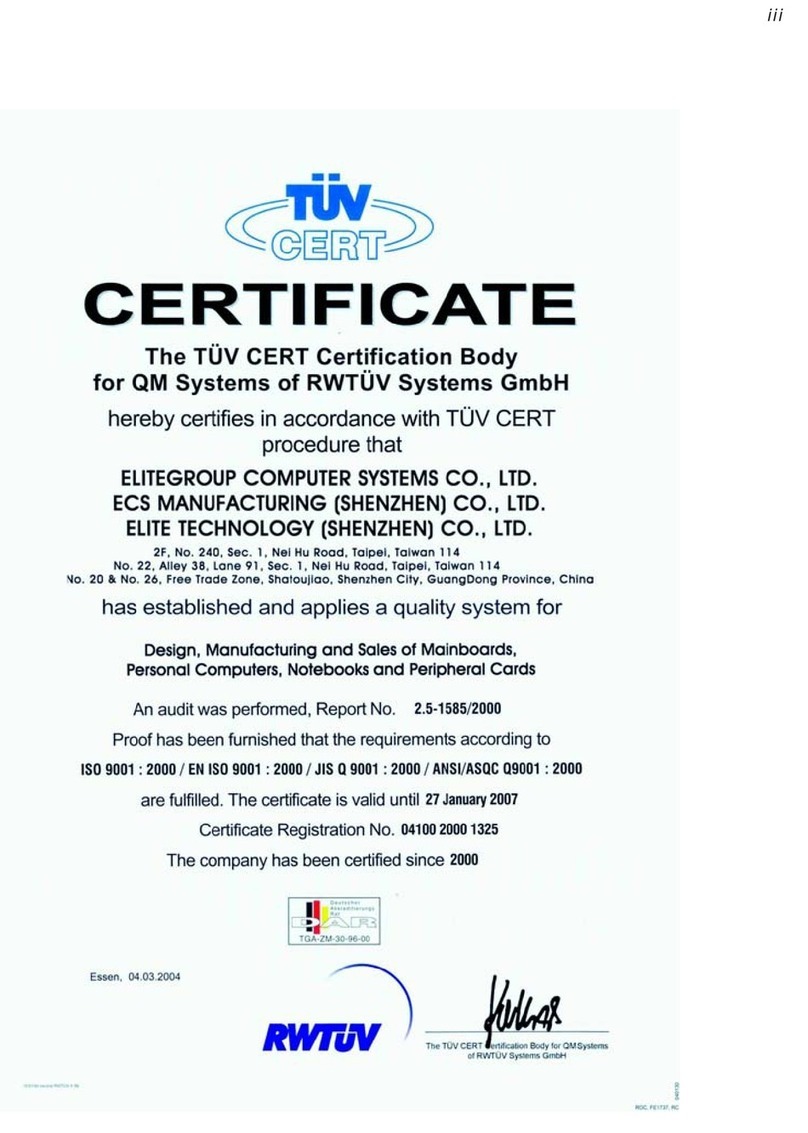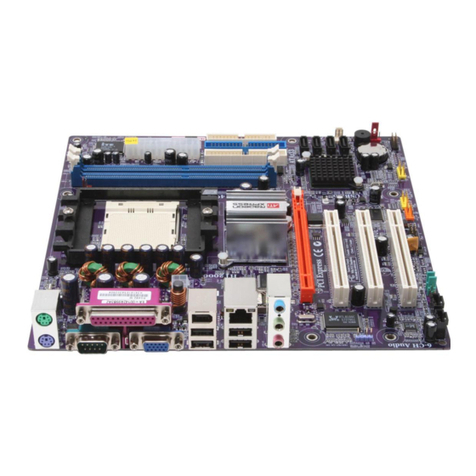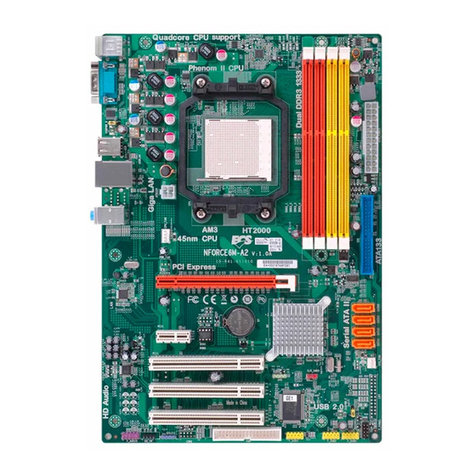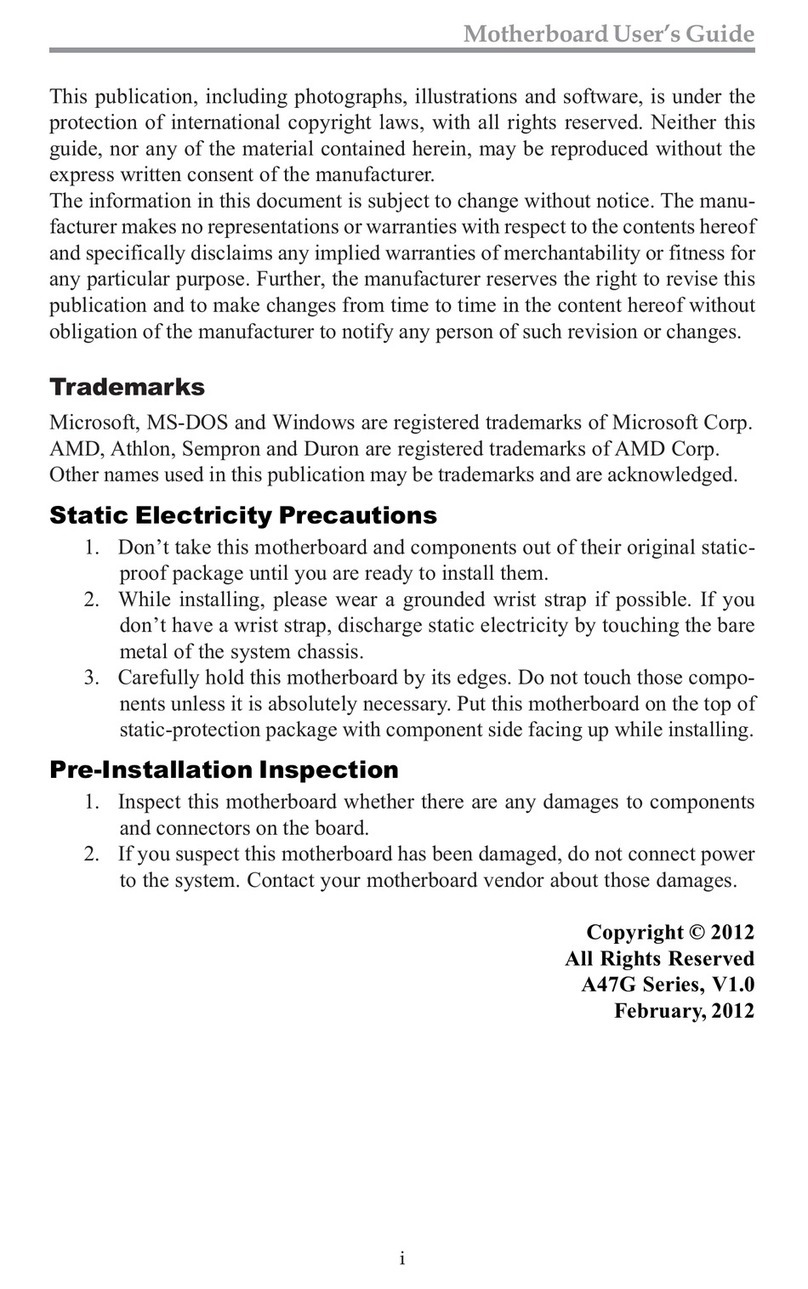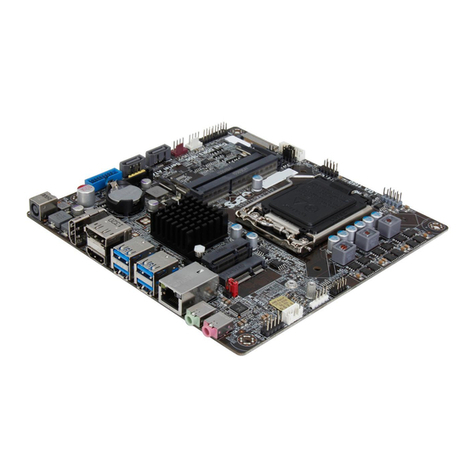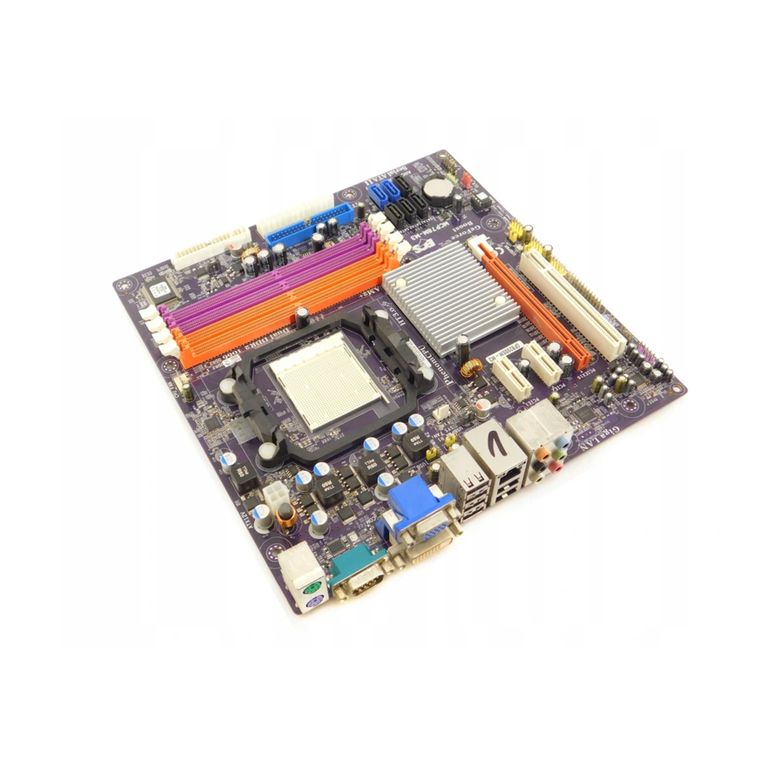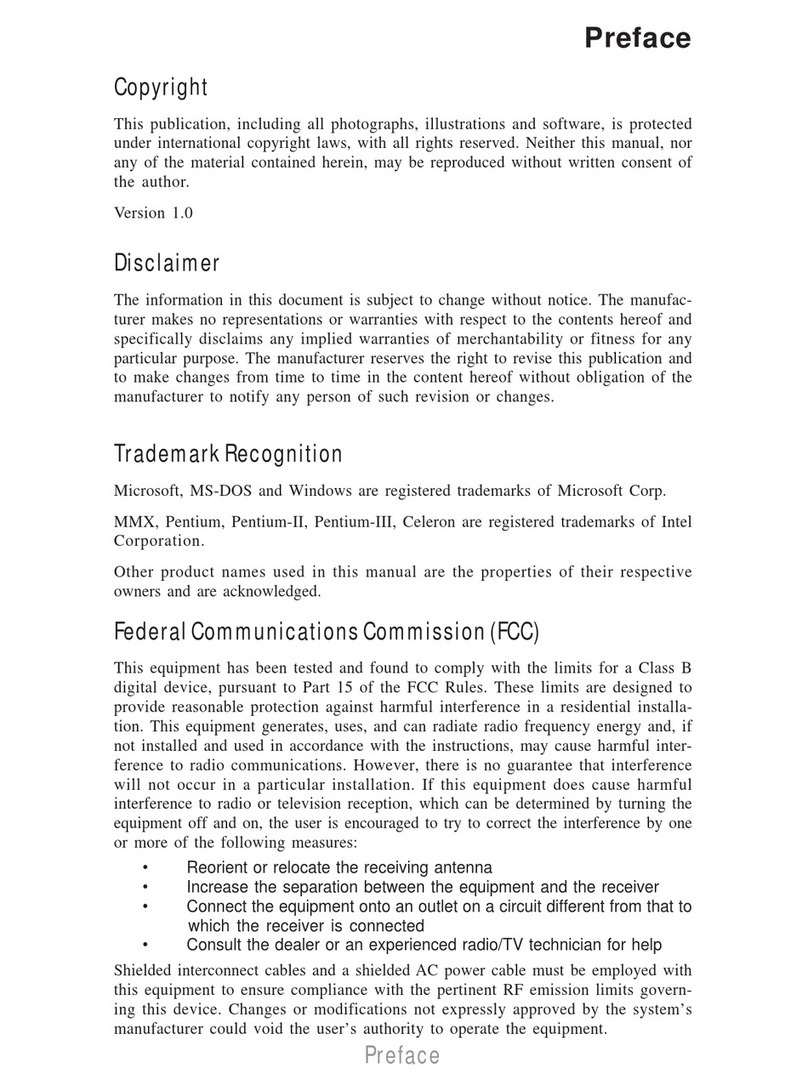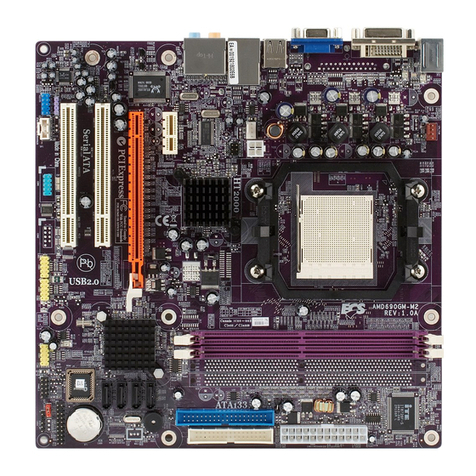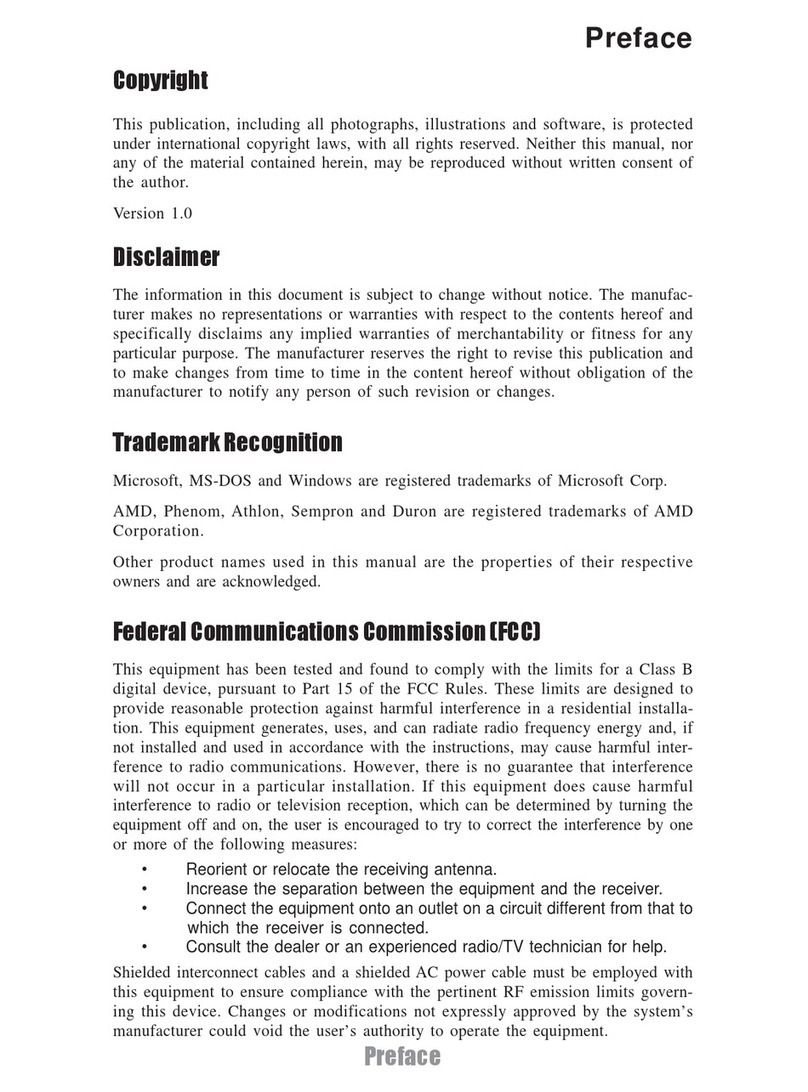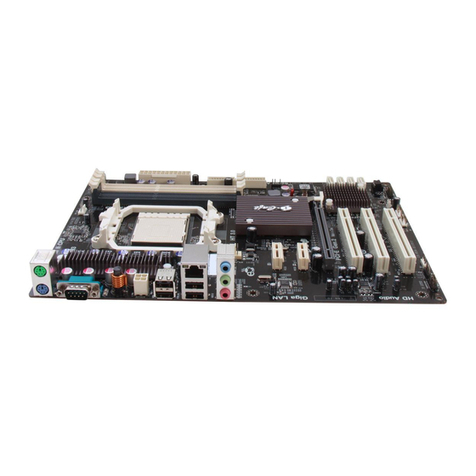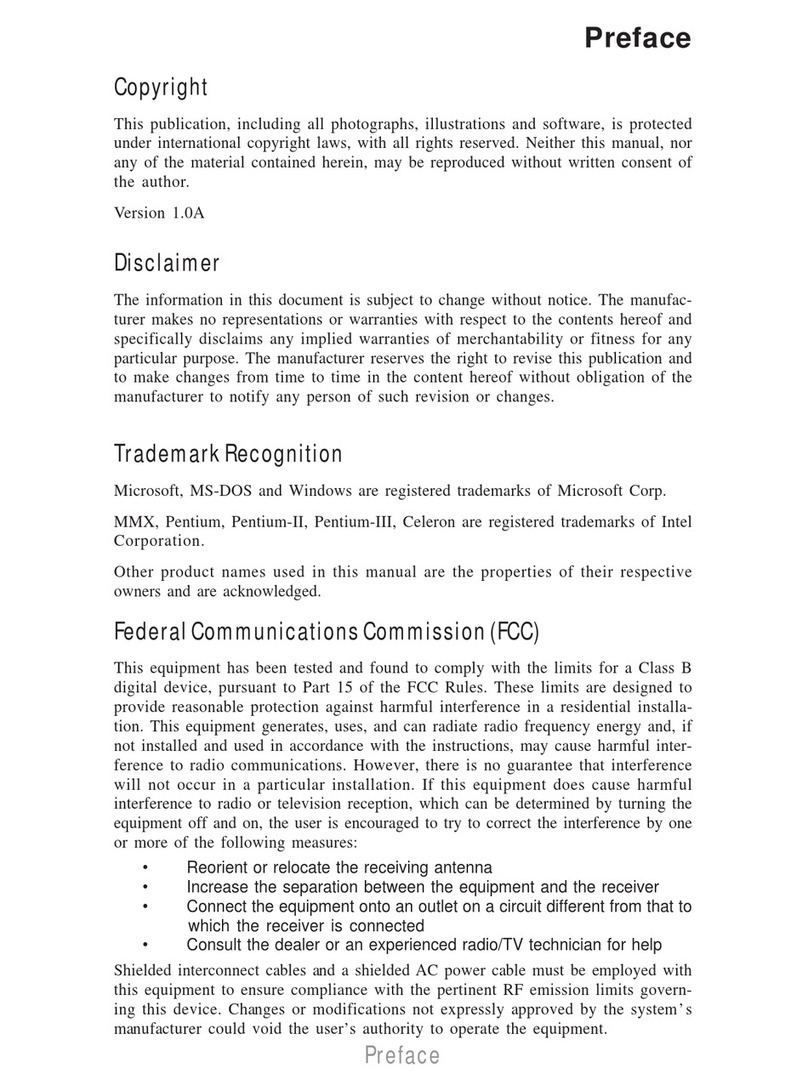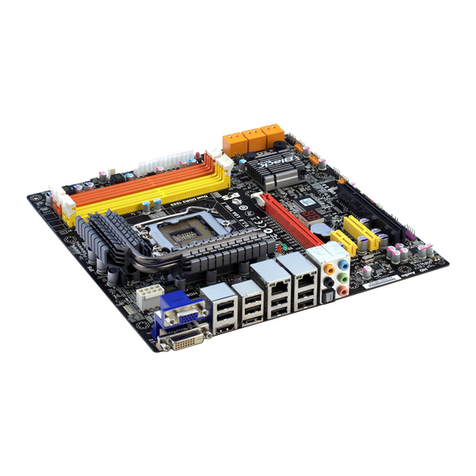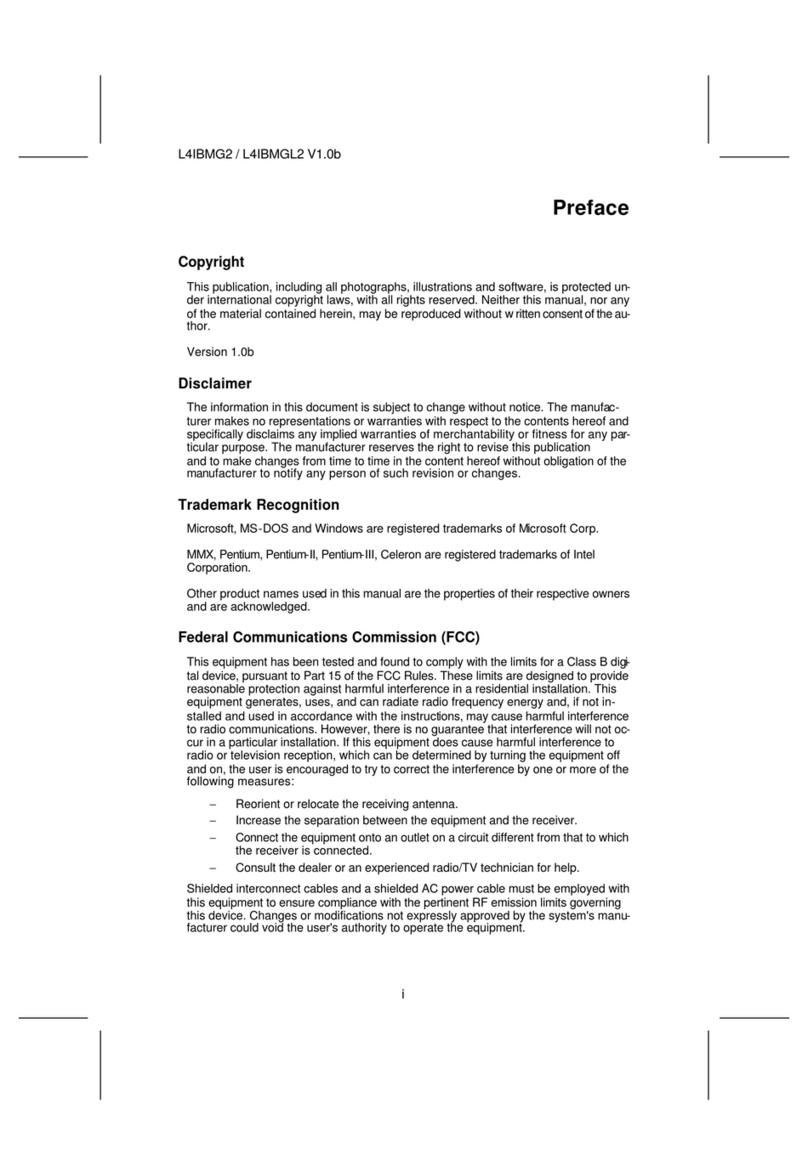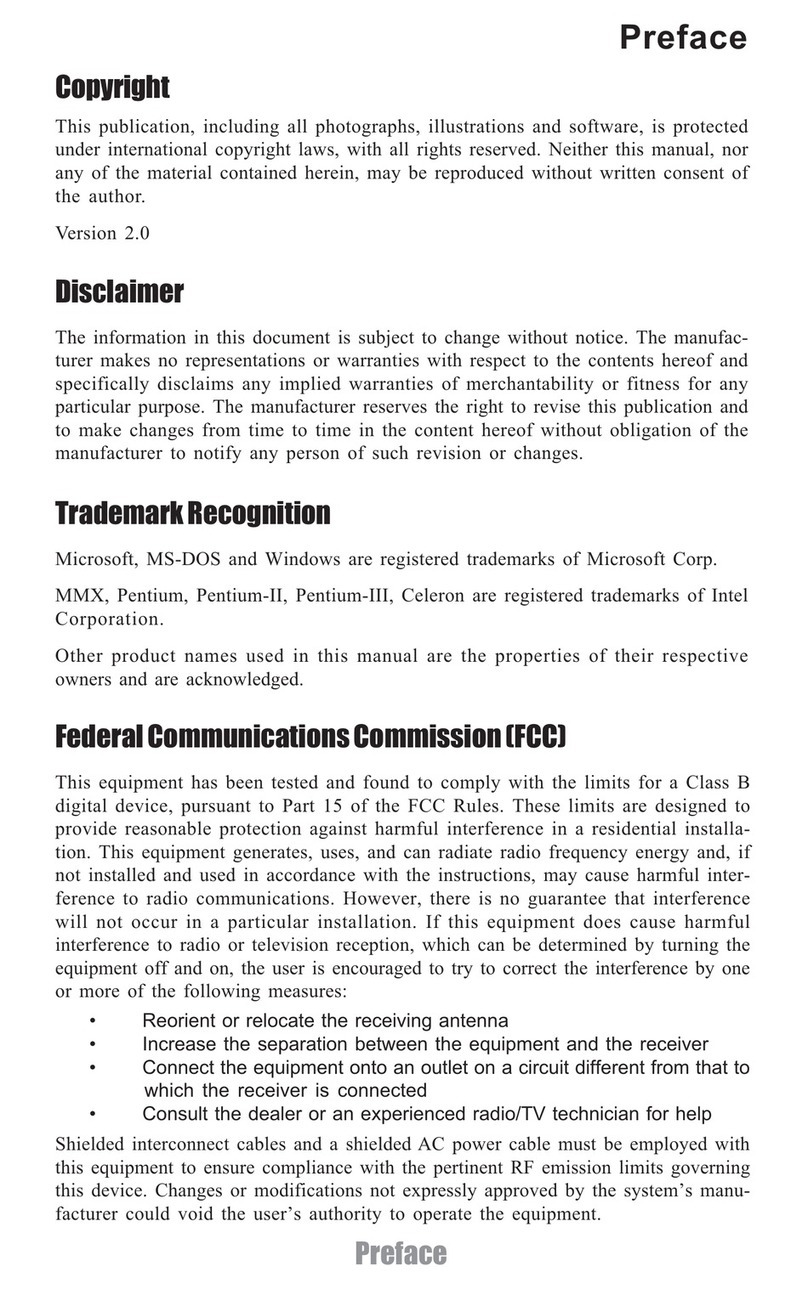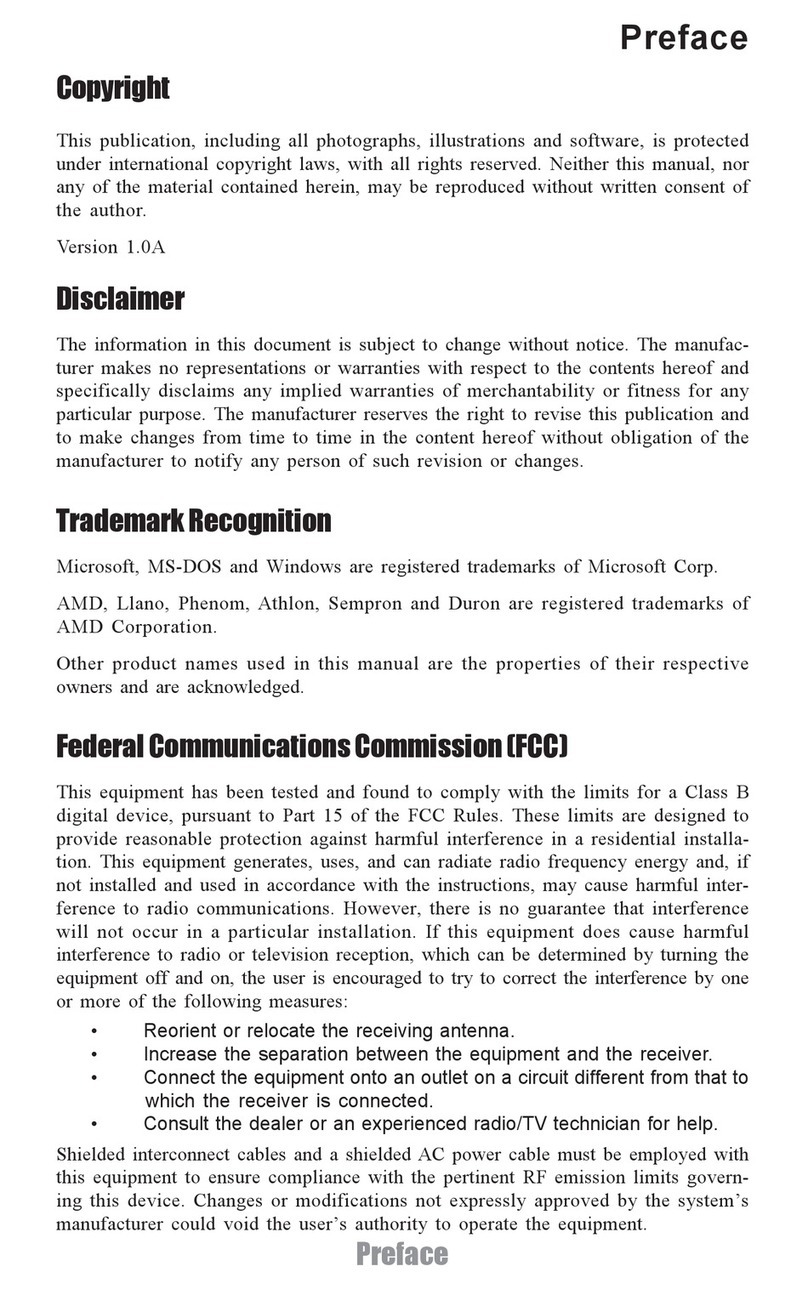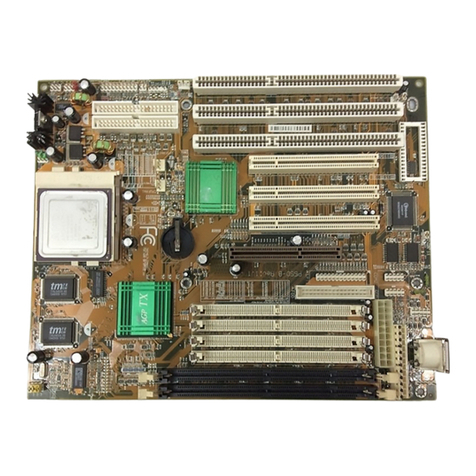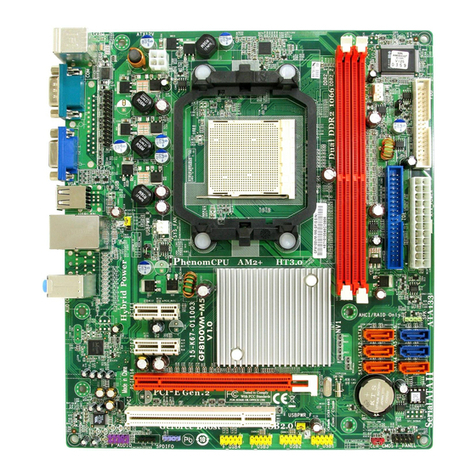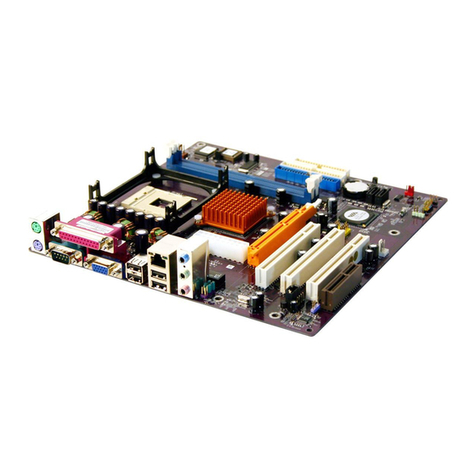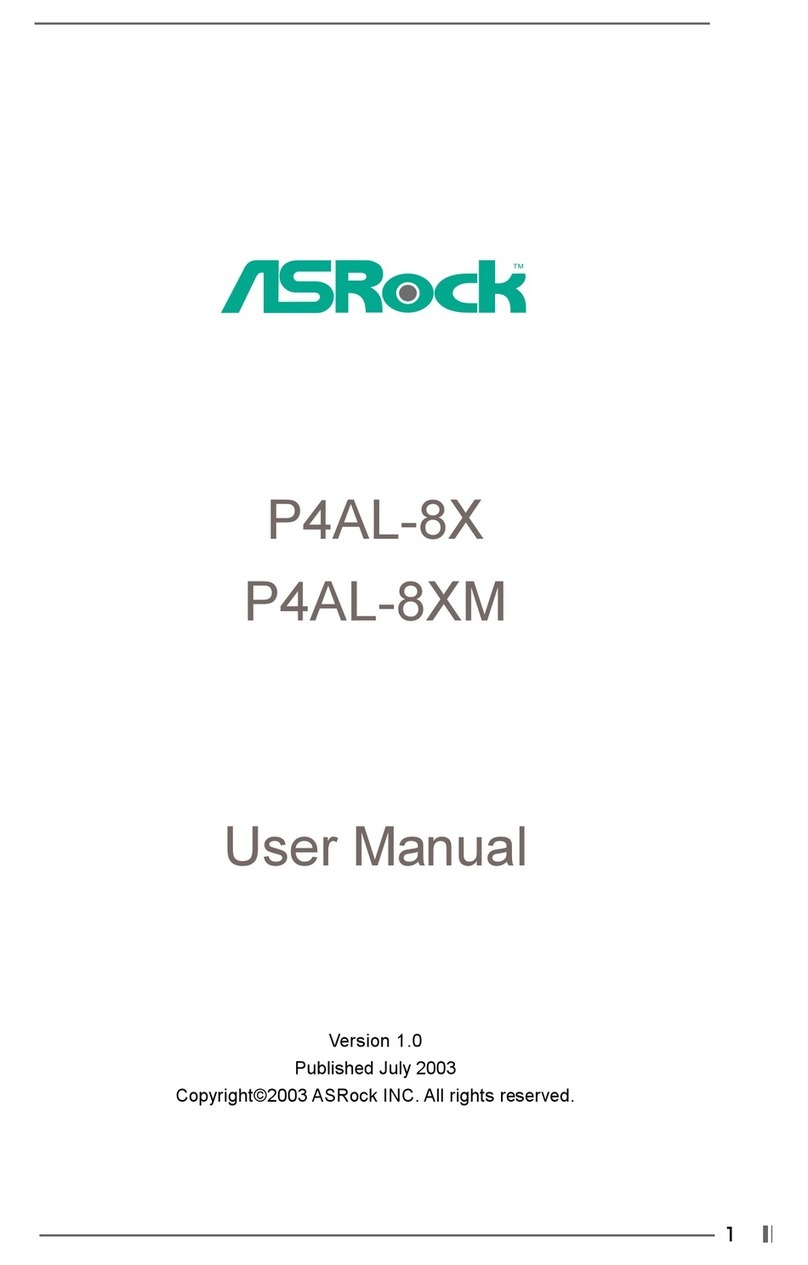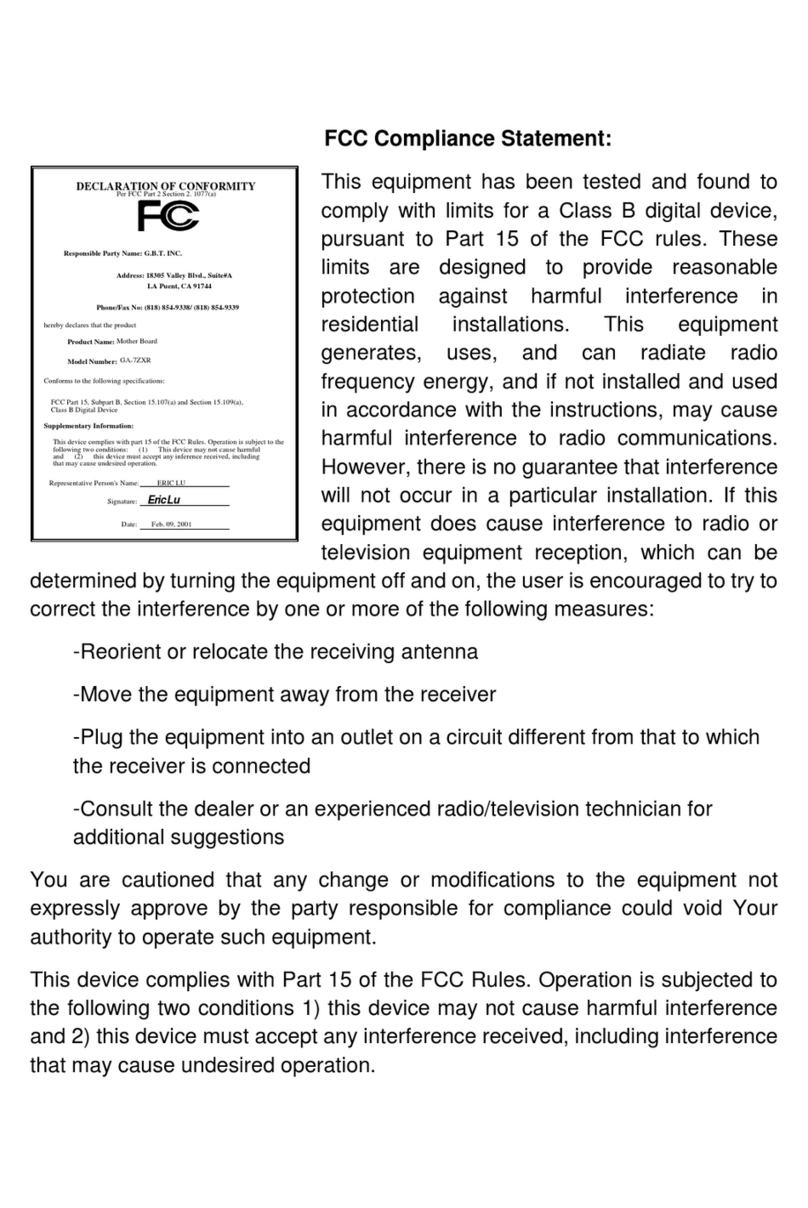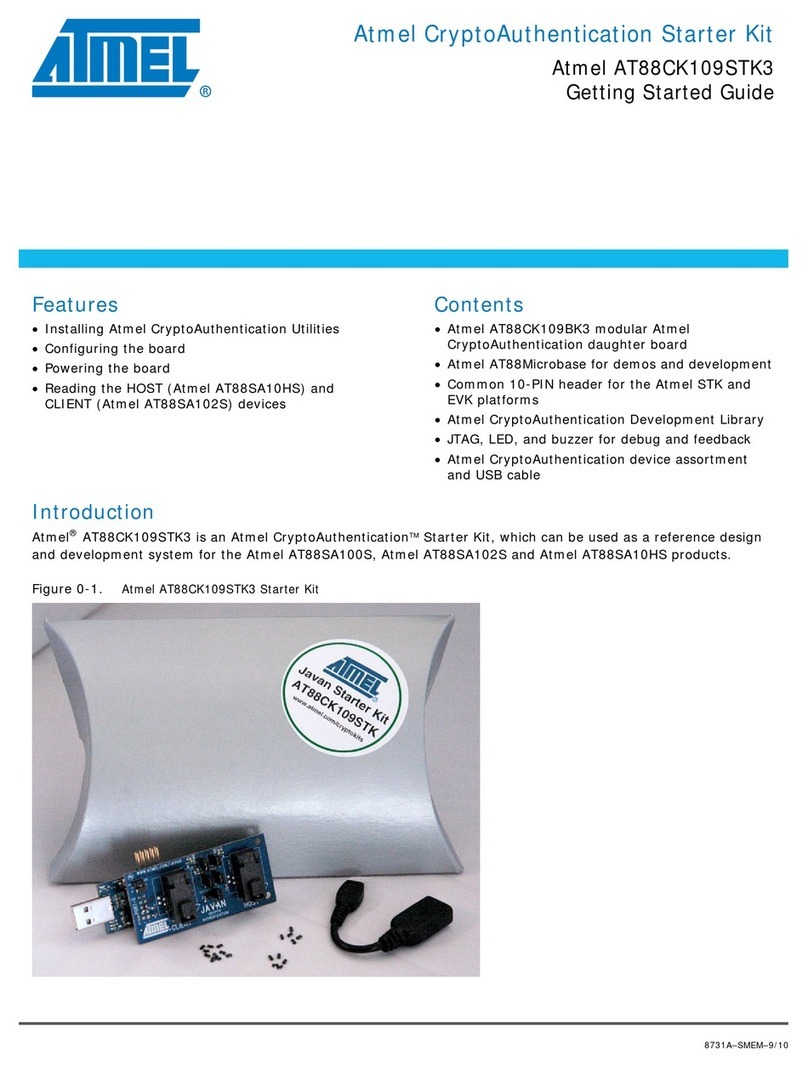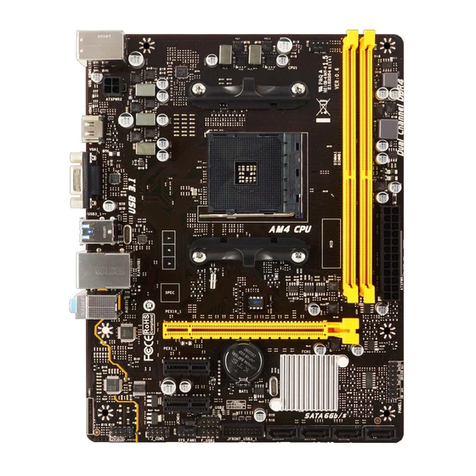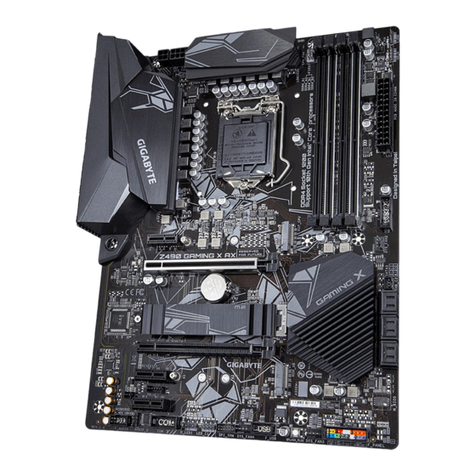ECS A880GM-M6 User manual

Preface
Preface
Copyright
This publication, including all photographs, illustrations and software, is protected
under international copyright laws, with all rights reserved. Neither this manual, nor
any of the material contained herein, may be reproduced without written consent of
the author.
Version 1.0
Disclaimer
The information in this document is subject to change without notice. The manufac-
turer makes no representations or warranties with respect to the contents hereof and
specifically disclaims any implied warranties of merchantability or fitness for any
particular purpose. The manufacturer reserves the right to revise this publication and
to make changes from time to time in the content hereof without obligation of the
manufacturer to notify any person of such revision or changes.
Federal Communications Commission (FCC)
This equipment has been tested and found to comply with the limits for a Class B
digital device, pursuant to Part 15 of the FCC Rules. These limits are designed to
provide reasonable protection against harmful interference in a residential installa-
tion. This equipment generates, uses, and can radiate radio frequency energy and, if
not installed and used in accordance with the instructions, may cause harmful inter-
ference to radio communications. However, there is no guarantee that interference
will not occur in a particular installation. If this equipment does cause harmful
interference to radio or television reception, which can be determined by turning the
equipment off and on, the user is encouraged to try to correct the interference by one
or more of the following measures:
• Reorient or relocate the receiving antenna.
• Increase the separation between the equipment and the receiver.
• Connect the equipment onto an outlet on a circuit different from that to
which the receiver is connected.
• Consult the dealer or an experienced radio/TV technician for help.
Shielded interconnect cables and a shielded AC power cable must be employed with
this equipment to ensure compliance with the pertinent RF emission limits govern-
ing this device. Changes or modifications not expressly approved by the system’s
manufacturer could void the user’s authority to operate the equipment.
Trademark Recognition
Microsoft, MS-DOS and Windows are registered trademarks of Microsoft Corp.
AMD, Phenom, Athlon, Sempron and Duron are registered trademarks of AMD
Corporation.
Other product names used in this manual are the properties of their respective
owners and are acknowledged.

ii
Preface
Declaration of Conformity
This device complies with part 15 of the FCC rules. Operation is subject to the
following conditions:
• This device may not cause harmful interference, and
• This device must accept any interference received, including interfer-
ence that may cause undesired operation.
Canadian Department of Communications
This class B digital apparatus meets all requirements of the Canadian Interference-
causing Equipment Regulations.
Cet appareil numérique de la classe B respecte toutes les exigences du Réglement sur
le matériel brouilieur du Canada.
About the Manual
The manual consists of the following:
Chapter 1
Introducing the Motherboard
Describes features of the motherboard.
Go to Hpage 1
Describes installation of motherboard
components.
Go to Hpage 7
Provides information on using the BIOS
SetupUtility.
Go to Hpage 27
Describes the motherboard software
Go to Hpage 47
page 55
Chapter 5
HybridGraphics®Technology
Support
Describes the Hybrid Graphics® Technol-
ogy
Go to H
Chapter 2
Installing the Motherboard
Chapter 3
UsingBIOS
Chapter 4
Using the Motherboard Software
Chapter 6
SettingUpAMDSB710RAIDCon-
figuration
Describes theAMD SB710 RAID
Configuration
Go to Hpage 59
Chatper 7
SettingUpeJIFFY
Describes the eJIFFY setting up
Go to Hpage 67
Chatper 8
TroubleShooting Provides basic trouble shooting tips
page 77Go to H

iii
TT
TT
TABLE OF CONTENTSABLE OF CONTENTS
ABLE OF CONTENTSABLE OF CONTENTS
ABLE OF CONTENTS
Preface i
Chapter 1 1
IntroducingtheMotherboard 1
Introduction............................................................................................1
Features...................................................................................................2
MotherboardComponents...................................................................4
Chapter 2 77
77
7
Installing the Motherboard 7
SafetyPrecautions.............................................................................7
ChoosingaComputerCase..............................................................7
Installingthe Motherboardin aCase.............................................7
CheckingJumperSettings................................................................8
Setting Jumpers.........................................................................8
Checking Jumper Settings.........................................................9
Jumper Settings.........................................................................9
InstallingHardware..........................................................................10
Installing the Processor...........................................................10
Installing Memory Modules.....................................................11
Expansion Slots.......................................................................15
Connecting Optional Devices..................................................17
Installing a Hard Disk Drive/CD-ROM/SATAHard Drive......20
Installing a Floppy Diskette Drive...........................................21
Connecting I/O Devices..............................................................22
ConnectingCase Components......................................................23
Front Panel Header..................................................................25
Chapter 3 2727
2727
27
UsingBIOS 27
Aboutthe Setup Utility....................................................................27
The Standard Configuration..........................................................27
Entering the Setup Utility...............................................................27
Resetting the Default CMOS Values...............................................28
UsingBIOS.......................................................................................29
Standard CMOS Setup..................................................................30
Advanced Setup.............................................................................32
Advanced Chipset Setup................................................................34

iv
Integrated Peripherals..................................................................35
Power Management Setup.............................................................36
PCI/PnP Setup...............................................................................37
PC Health Status............................................................................38
M.I.B.II (MB Intelligent Bios)........................................................41
Load Default Settings.........................................................................44
Supervisor Password......................................................................44
User Password................................................................................45
Save & Exit Setup ...........................................................................45
Exit Without Saving..........................................................................45
Chapter 4 4747
4747
47
UsingtheMotherboardSoftware 47
Aboutthe Software DVD-ROM/CD-ROM....................................47
Auto-installingunderWindowsXP/Vista/7....................................47
Running Setup...................................................................................48
ManualInstallation..........................................................................50
UtilitySoftware Reference................................................................50
Chapter 5 5555
5555
55
Hybrid Graphics®Technology Support 55
HybridGraphics®Technology.........................................................55
Updating the BIOS...........................................................................46
Chapter 6 5959
5959
59
SettingUpAMD SB710RAIDConfiguration 59
SettingUp a BootableRAIDArray...................................................59
Chapter 7 6767
6767
67
SettingUpeJIFFY 67
Introduction..........................................................................................67
Installation and BIOS Setup.................................................................68
Entering eJIFFY.............................................................................................71
Features Icons...........................................................................................72
Usage FAQ.................................................................................................73
Chapter 8 7777
7777
77
TroubleShooting 77
Startupproblemsduringassembly.......................................................77
Startup problems after prolong use.................................................78
Maintenanceandcaretips..................................................................78
Basic Troubleshooting Flowchart...................................................79
POSTCodeCheckpoints 8181
8181
81

1
IntroducingtheMotherboard
Chapter1
IntroducingtheMotherboard
Introduction
Currently, the memory maximum size we have tested is 16 GB.
*
Thank you for choosing the A880GM-M6 motherboard. This motherboard is a high
performance, enhanced function motherboard that supports socket for AMD
PhenomTM II processor (socket AM3) for high-end business or personal desktop
markets.
The motherboard incorporates the AMD 880G Northbridge (NB) and SB710
Southbridge (SB) chipsets. The Northbridge supports the HyperTransportTM 3.0 in-
terface. The memory controller supports DDR3 memory DIMM frequencies of
1600 (OC)/1333/1066. It supports four DDR3 slots with maximum memory size of
32 GB*. One PCI Express x16 slot, intended for Graphics Interface, are fully compli-
ant to the PCI Express Gen2 (version 2.0). In addition, two PCI Express x1 slots are
supported.
The SB710 Southbridge supports one PCI slot which is PCI v2.3 compliant. It
integrates USB 2.0 interface, supporting up to twelve functional ports (six USB ports
and three USB 2.0 headers support additional six USB ports). One onboard IDE
connector supports two IDE devices in Ultra ATA 133/100/66/33 modes. The
Southbridge integrates a Serial ATA host controller, supporting six SATA ports with
maximum transfer rate up to 3.0 Gb/s each. It provides AMD SATA RAID configura-
tion with RAID 0, 1 and 10 modes supported.
There is an advanced full set of I/O ports in the rear panel, including one DVI port,
one VGA port, one HDMI port, one 1394A port, two eSATA ports, six USB ports,
one optical SPDIFO port, one LAN port and audio jacks for microphone, line-in and
8-ch line-out.

2
Introducing the Motherboard
Feature
Processor
HyperTransportTM Technology is a point-to-point link between two devices, it
enables integrated circuits to exchange information at much higher speeds than
currently available interconnect technologies.
• Accommodates AMD PhenomTM II processor (socket AM3)
• Supports HyperTransportTM (HT) 3.0 interface speeds
This motherboard uses a socket AM3 that carries the following features:
Chipset
This board supports CPU up to 125W TDP only.
• Compliant with PCI 2.3 specification at 33 MHz
• Supports six Serial ATA devices which speeds up to
3.0 Gb/s
• Integrated USB 2.0 Host Controller supporting up to
twelve USB 2.0 ports
• Integrated IDE controller supports Ultra ATA 133/100/
66/33 modes
• Supports integrated RAID0, RAID1, and RAID 10 (re-
quires use of 4 or more SATA ports) functionalities
across all 6 ports
AMD 880G
(NB)
• One x4 A-Link Express II interface for connection to
an AMD Southbridge
• Supports PCIe Gen 2 (version 2.0)
• Proven RadeonTM graphics powering DirectX®10.1
• Enhanced Digital Display integration
• Fully ACPI 2.0 and IAPC (Instantly Available PC) power
management
• Single chip solution in 55nm, 1.1 V CMOS technology
• Integrated ATI Hybrid CrossFire™
,ATI AvivoTM HD1,
AMD Cool'n'QuietTM, ATI SurroundViewTM,AMD
OverDrive and AMD PowerNow!
The AMD 880G Northbridge (NB) and SB710 Southbridge (SB) chipsets are
based on an innovative and scalable architecture with proven reliability and
performance.
SB710
(SB)

3
IntroducingtheMotherboard
Onboard LAN
•Supports PCI ExpressTM 1.1
• Integrated 10/100/1000 transceiver
• Wake-on-LAN and remote wake-up support
Memory
• SupportsDDR3 1600 (OC)/1333/1066 DDR3SDRAMwithDual-chan-
nel architecture
• Accommodates four unbuffered DIMMs
• 4 x 240-pin DDR3 DIMM sockets support up to 32 GB*
1394a FireWire
• Complies with PCI Express Rev 1.1
• SinglechipCompliance withIEEE 1394a-2000,1394-1995 and 1394a
Open HCI host controller integrated 2-port PHY layer function
• Supports 400/200/100 Mbps of data transfer rate
Audio
•All DACs support 192K/96K/48K/44.1KHz DAC sample rate
• Software selectable 2.5V/3.75V VREFOUT
• Meets Microsoft WLP 3.08 audio requirements
• Direct Sound 3DTM compatible
1. Since the AMD CPUs are varies, when A880GM-M6 is using some
CPUs, its memory that OC to 1600 before can not run at 1600 now, it
will be down to 800. This is normal.
Please refer to AMD website: http://www.amd.com/ for more detailed
information about how CPU supports memory.
Herein ECS would like to remind you kindly: although A880GM-M6
has made well preperation for OC function in H/W specification, it still
be very important to make the processor that has very good perfor-
mance to be compliant with the memory also having good performance.
When you want to raise up the voltage, please pay more attention to
specification as well.
M.I.B.II will give warning by showing red words, but it can not ensure
your personal safety in using. Therefore, you should be pay more atten-
tion.
Currently, the memory maximum size we have tested is 16 GB.
2.*

4
IntroducingtheMotherboard
Integrated I/O
The motherboard has a full set of I/O ports and connectors:
• One DVI port
• One VGA port
• OneHDMI port
• One 1394a port
• Two eSATA ports
• OneopticalSPDIFOport
• Six USB ports
• One LAN port
• Audio jacks for microphone, line-in and 8-ch line-out
BIOS Firmware
1. Some hardware specifications and software items are subject to change
without prior notice.
2. Due to chipset limitation, we recommend that motherboard be operated
in the ambiance between 0 and 50°C.
The firmware can also be used to set parameters for different processor clock
speeds. And it is available to adjust the voltages of the CPU, NB and SB.
The motherboard uses AMI BIOS that enables users to configure many system
features including the following:
• Power management
• Wake-up alarms
• CPUparameters
• CPUand memory timing
This motherboard supports Ultra DMA bus mastering with transfer rates of
133/100/66/33 MB/s.
Expansion Options
The motherboard comes with the following expansion options:
• One PCI Express x16 slot for Graphics Interface
• Two PCI Express x1 slots
• One 32-bit PCI v2.3 compliant slot
• One IDE connector supporting up to two IDE devices
• Six 7-pin SATA connectors

5
IntroducingtheMotherboard
MotherboardComponents
The above image is for reference only; please take the actual
motherboard for detailed parts.

6
IntroducingtheMotherboard
Table of Motherboard Components
LABEL COMPONENTS
1. CPU Socket Socket for AMD PhenomTM II processor (socket AM3)
2. CPU_FAN CPU cooling fan connector
3. DDR3_1~4 240-pin DDR3 SDRAM slots
4. ATX_POWE
R
Standard 24-
p
in ATX
p
ower connecto
r
5. IDE Primar
y
IDE connecto
r
6. SATA1~6 Serial ATA connectors
7. SYS_FAN System cooling fan connector
8. F_PANEL Front Panel switch/LED header
9. PWR_BTN Power on button
10. RST_BTN Reset button
11. SPI_DEBUG SPI DEBUG header
12. CLR_CMOS_BTN Clear CMOS button
13. F_USB1~3 Front Panel USB headers
14. F_1394A Onboard 1394a header
15. SPDIFO SPDIF out header
16. F_AUDIO Front Panel Audio header
17. PCI 32-bit add-on card slot
18. PCIE1~2 PCI Express x1 slots
19. PCIEX16 PCI Express x16 slot for graphics interface
20. PWR_FAN Power cooling fan connector
21. ATX12
V
8-pin +12V power connecto
r
This concludes Chapter 1. The next chapter explains how to install the motherboard.

7
Installing the Motherboard
Chapter 2
Installing the Motherboard
SafetyPrecautions
• Follow these safety precautions when installing the motherboard
• Wear a grounding strap attached to a grounded device to avoid dam-
age from static electricity
• Discharge static electricity by touching the metal case of a safely
grounded object before working on the motherboard
• Leave components in the static-proof bags they came in
• Hold all circuit boards by the edges. Do not bend circuit boards
ChoosingaComputer Case
There are many types of computer cases on the market. The motherboard complies
with the specifications for the Micro ATX system case. Firstly, some features on the
motherboard are implemented by cabling connectors on the motherboard to indica-
tors and switches on the system case. Make sure that your case supports all the
features required. Secondly, this motherboard supports two enhanced IDE drives.
Make sure that your case has sufficient power and space for all drives that you intend
to install.
Most cases have a choice of I/O templates in the rear panel. Make sure that the I/O
template in the case matches the I/O ports installed on the rear edge of the
motherboard.
This motherboard carries a Micro ATX form factor of 244 X 244 mm. Choose a case
that accommodates this form factor.
InstallingtheMotherboard inaCase
Refer to the following illustration and instructions for installing the motherboard in
a case.
Most system cases have mounting brackets installed in the case, which correspond
the holes in the motherboard. Place the motherboard over the mounting brackets
and secure the motherboard onto the mounting brackets with screws.
Ensure that your case has an I/O template that supports the I/O ports and expansion
slots on your motherboard.

8
Installing the Motherboard
Do not over-tighten the screws as this can stress the motherboard.

9
Installing the Motherboard
CheckingclearCMOSbutton
The following illustration shows the location of the clear CMOS button.
To avoid the system unstability after clearing CMOS, we recommend
users to enter the main BIOS setting page to “Load Default Settings” and
then “Save Changes and Exit”.
Name Type Description Setting (default)
CLR_CMOS_BTN button CLEAR CMOS
NO PUSH: NORMAL
PUSH: CLEAR
Before clearing the
CMOS, make sure to
turn the system off. CLR_CMOS_BTN

10
Installing the Motherboard
InstallingHardware
Installing the Processor
Caution: When installing a CPU heatsink and cooling fan make sure
that you DO NOT scratch the motherboard or any of the surface-
mount resistors with the clip of the cooling fan. If the clip of the
cooling fan scrapes across the motherboard, you may cause serious
damage to the motherboard or its components.
This motherboard has a socket AM3 processor socket. When choosing a processor,
consider the performance requirements of the system. Performance is based on the
processor design, the clock speed and system bus frequency of the processor, and the
quantity of internal cache memory and external cache memory.
Before installing the Processor
This motherboard automatically determines the CPU clock frequency and system
bus frequency for the processor. You may be able to change the settings in the system
Setup Utility. We strongly recommend that you do not over-clock processors or
other components to run faster than their rated speed.
On most motherboards, there are small surface-mount resistors near
the processor socket, which may be damaged if the cooling fan is
carelessly installed.
Avoid using cooling fans with sharp edges on the fan casing and the
clips. Also, install the cooling fan in a well-lit work area so that you
can clearly see the motherboard and processor socket.
1. Over-clocking components can adversely affect the reliability of the
system and introduce errors into your system. Over-clocking can per-
manently damage the motherboard by generating excess heat in com-
ponents that are run beyond the rated limits.
2. Always remove the AC power by unplugging the power cord from the
power outlet before installing or removing the motherboard or other
hardware components.
Warning:

11
InstallingtheMotherboard
CPU Installation Procedure
The following illustration shows CPU installation components.
1 Install your CPU. Pull up the lever away from
the socket and lift up to 90-degree angle.
2 Locate the CPU cut edge (the corner with
the pin hold noticeably missing). Align and
insert the CPU correctly.
3 Press the lever down and apply thermal
grease on top of the CPU.
4 Put the CPU Fan down on the retention mod-
ule and snap the four retention legs of the
cooling fan into place.
5 Flip the levers over to lock the heat sink in
placeand connecttheCPU coolingFanpower
cable to the CPU fan connector. This com-
pletes the installation.
To achieve better airflow rates and heat dissipation, we suggest that you
use a high quality fan with 4800 rpm at least. CPU fan and heatsink
installation procedures may vary with the type of CPU fan/heatsink sup-
plied. The form and size of fan/heatsink may also vary.
Installing Memory Modules
This motherboard accommodates four memory modules. It can support four 240-pin
DDR3 1600 (OC)/1333/1066. The total memory capacity is 32 GB*.
DDR3 SDRAM memory module table
You must install at least one module in any of the four slots. The total memory
capacity is up to 32 GB*.
Do not remove any memory module from its antistatic packaging until
you are ready to install it on the motherboard. Handle the modules only
by their edges. Do not touch the components or metal parts. Always
wear a grounding strap when you handle the modules.
The four DDR3 memory sockets (DIMM1, DIMM2, DIMM3, DIMM4) are divided
into two channels and each channel has two memory sockets as following:
ff
ff Channel 0: DIMM1, DIMM2
Channel 1: DIMM3, DIMM4
Memory module Memory Bus
DDR3 1066 533 MHz
DDR3 1333 667 MHz
Currently, the memory maximum size we have tested is 16 GB.
*

12
Installing the Motherboard
Installation Procedure
Refer to the following to install the memory modules.
1 This motherboard supports unbuffered DDR3 SDRAM only.
2 Push the latches on each side of the DIMM slot down.
3 Align the memory module with the slot. The DIMM slots are keyed with
notches and the DIMMs are keyed with cutouts so that they can only be
installed correctly.
4 Check that the cutouts on the DIMM module edge connector match the
notches in the DIMM slot.
5 Install the DIMM module into the slot and press it firmly down until it
seats correctly. The slot latches are levered upwards and latch on to
the edges of the DIMM.
6 InstallanyremainingDIMMmodules.
For best performance and compatibility, we recommend that users
install DIMMs in the sequence of DIMM3, DIMM4, DIMM1 and
DIMM2.
Recommend configuration for best performance and compatibility
* When Unganged Mode is disabled
Number of DIMMs DIMM 1 DIMM 2 DIMM 3 DIMM 4 AM3
1Single Channel
2Dual Channel
3Single Channel
4Dual Channel
: operation with normal performance
: operation with the best performance

13
Installing the Motherboard
Table A: DDR3(memory module) QVL (Qualified Vendor List)
The following memory modules have been tested and qualified for use with this
motherboard.
DDR3 800
NO. Vendor Module part number IC Brand IC Chip Number SS/DS Size
1 Qimonda IMSH51U03A1F1C-08E
Qimonda IDSH51-03A1F1C-OBE
SS 512MB
NO. Vendor Module part number IC Brand IC Chip Number SS/DS Size
1 Elixir M2Y2G64CB8HC9N-BE DS 2GB
2 Elixir M2Y2G64CB8HC5N-BE elixir N2CB1G80CN-BE DS 2GB
3 Elpida PC3-8500U-7-00-AP Elpida J53088ASE-AC-E SS 512MB
4 Hynix HYMT112U64ZNF8-G8 AA Hynix HY5TQ1G831ZNFP-G8 SS 1GB
5 Hynix HMT112U6AFP8C-G7N0 AA Hynix H5TQ1G83AFP G7C SS 1GB
6 Hynix HYMT125U64ZNF8-G8 AA Hynix HY5TQ1G831ZN FP-G8 DS 2GB
7 Hynix HMT125U6AFP8C-G7N0 AA Hynix H5TQ1G83AFP G7C DS 2GB
8 Kingston KVR1066D3N7 Elpida J5308BASE-AE-E 07500W220 SS 1GB
9 Micron MT8JTF12864AY-1G1D1 Micron 7UD22D9JNL SS 1GB
10 Micron MT8JTF12864AY-1G1D1 Micron 8TD22 D9JNL SS 1GB
11 Micron MT16JTF25664AY-1G1D1 Micron 7UD22D9JNL DS 2GB
12 Micron MT16JTF25664AY-1G1D1 Micron 8WD22 D9JNL DS 2GB
13 Micron MT16JTF25664AZ-1G1F1 Micron 9EF22 D9KPV DS 2GB
14 Micron MT8JTF12864AZ-1G1F1 Micron 9NF22 D9KPT SS 1GB
15 Ramaxel RMR1810NA48E7F-1066-LF NANYA NT5CB128H8AN-DE SS 1GB
16 Samsung M378B2873DZ1-CF8 0818 SEC HCF8 K4B1G0846D SS 1GB
17 Samsung M378B5673DZ1-CF8 0842 SEC K4B1G0846D HCF8 DS 2GB
18 Kingston KVR1066D3N7/512
Elpida
J5308BASE-AE-E 07340W065
SS 512MB
19 Qimonda IMSH1GU03A1F1C-10F Qimonda IDSH1G-03A1F1C-10F FSS15085 SS 1GB
20 Qimonda IMSH1GU03A1F1C-10G Qimonda IDSH1G-03A1F1C-10G FSS14526 SS 1GB
21 Qimonda IMSH2GU13A1F1C-10F Qimonda IDSH1G-03A1F1C-10F FSS15085 DS 2GB
22 Qimonda IMSH2GU13A1F1C-10G Qimonda IDSH1G-03A1F1C-10G FSS13467 DS 2GB
23 Hynix HYMT112U64ZNF8-G8 AA
Hynix HY5TQ1G831ZN FP-G8
SS 1GB
24 Samsung M378B2873EH1-CF8 SEC HCF8K4B1G0846E SS 1GB
25 Samsung M378B5673DZ1-CF8 0842 SEC K4B1G0846D HCF8 DS 2GB
26 Aeneon AEH760UD00-10FA98X Aeneon AEH93R10F 0737 SS 1GB
27 Elpida EBJ10UE8BDF0-AE-F Elpida J1108BDSE-DJ-F SS 1GB
28 Elpida EBJ21UE8BDF0-AE-F Elpida J1108BDSE-DJ-F DS 2GB
29 Corsair CM3X1024-1066C7 SS 1GB
30 Nanya M2Y2G64TU8HD5B-BD elixir N2CB1G80AN-CG DS 2GB
31 Winchip 64A0TPHM8G17E
Elpida J5308BASE-AC-E
SS 1GB
NO. Vendor Module part number IC Brand IC Chip Number SS/DS Size
1 A-DATA AD3U1333B1G9-B Hynix H5TQ1G83BFR SS 1GB
2 A-DATA AD3U1333B2G9-B Hynix H5TQ1G83BFR DS 2GB
3 Apacer 78.A1GC6.9L1 Apacer AM5D5808ADWSBG DS 2GB
4 Elixir M2F2G64CB8HA4N-CG Elixir N2CB1G80AN-CG 0903 DS 2GB
5 Elixir M2Y2G64CB8HC9N-CG DS 2GB
6 Hynix HMT112U6AFP8C-H9N0 AA Hynix H5TQ1G83AFP H9C SS 1GB
7 Hynix HMT125U6AFP8C-H9N0 AA Hynix H5TQ1G83AFP H9C DS 2GB
8 G.SKILL F3-10666CL9D-4GBRL DS 2GB
9 G.SKILL F3-10666CL8D-4GBECO DS 2GB
10 G.SKILL F3-10666CL9D-4GBNQ DS 2GB
11 Kingston KVR1333D3N9 Elpida J1108BASE-DJ-E SS 1GB
12 Kingston KVR1333D3N9 Elpida J1108BABG-DJ-E DS 2GB
13 Kingston KVR1333D3N9 Hynix Hynix/H5TQ2G83AFR DS 4GB
14 KingMax FLFD45F-B8KG9 NAES KingMax KFB8FNGXF-ANX-15A SS 1GB
15 KingMax FLFE85F-B8KG9 NEES KingMax KFB8FNGXF-ANX-15A DS 2GB
16 Nanya NT2GC64B8HAONF-CG Elixir N2CB1G80AN-CG DS 2GB
17 Micron MT8JTF12864AY-1G4D1 Micron 8UD22 D9JNM SS 1GB
18 Micron MT16JTF25664AY-1G4D1 Micron 8WD22 D9JNM DS 2GB
19 Micron MT8JTF12864AZ-1G4F1 Micron 9MF22 D9KPT SS 1GB
20 PSC AL7F8G73D-DG1 PSC A3P1GF3DGF SS 1GB
21 PSC AL8F8G73D-DG1 PSC A3P1GF3DGF DS 2GB
22 Ramaxel RMR1810KD48E7F-1333 SEC K4B1G0846D SS 1GB
23 Ramaxel RMR186EA48D8F-1333 ELPLDA J1108BASE-DJ-E DS 2GB
24 Samsung M378B2873DZ1-CH9 SEC K4B1G0846D SS 1GB
25 Samsung M378B2873EH1-CH9 SEC K4B1G0846E HCH9 SS 1GB
26 Samsung M378B5673EH1-CH9 SEC K4B1G0846E HCH9 DS 2GB
27 Samsung M378B2873FHS-CH9 SEC K4B1G0846F SS 1GB
28 Samsung M378B5673FH0-CH9 SEC K4B1G0846F DS 2GB
29 Samsung M378B5273CH0-CH9 SEC K4B2G0846C DS 4GB
30 Silicon Power SP001GBLTU133S01 Nanya NT5CB128M8AN-CG SS 1GB
31 Silicon Power SP002GBLTU133S01 Nanya NT5CB128M8AN-CG DS 2GB
DDR3 1333
DDR3 1066

14
Installing the Motherboard
DDR3 1333
NO. Vendor Module part number IC Brand IC Chip Number SS/DS Size
1 Aeneon AXH760UD00-13GA98X
SS 1GB
2Corsai
r
CM3X1024-1333C9DH
X
SS 1GB
3KingsMaxFLFD45F-B8KG9NAUS
KingsM ax KFB8FNGXF-ANX-15U
SS 1GB
4 KingsMax FLFE85F-B8KG9 NEUS
KingsM ax KFB8FNGXF-ANX-15U
DS 2GB
5 Kingston KVR1333D3N9 Micron 8CD22 D9JNM SS 1GB
6 Kingston KVR1333D3N9 Kingston 128X8DDR3 SL0931 DS 2GB
7 Kingston KVR1333D3N9K2/2G Elpida J1108BASE-DJ-E DS 2GB
8 Kingston KVR1333D3N9/2G Qimonda IDSH1G-03A1F1C-13H
DS 2GB
9 Elixir M2Y1G64CB88A5N-CG
Elixi
r
N2CB1G80AN-CG
SS 1GB
10 Elixir M2Y2G64CB8HA5N-CG
Elixi
r
N2CB1G80AN-CG
DS 2GB
11 Nanya NT1GC64B88A0NF-CG
Nanya NT5CB128M8AN-CG
SS 1GB
12 Qimonda IMSH1GU13A1F1C-13H Qimonda 0734 IDSH51-03A1F1D SS 1GB
13 Qimonda IMSH2GU13A1F1C-13H Qimonda IDSH1G-03A1F1C-13H FSS08244 DS 2GB
14 Unifosa
GU502203EP0201
Elpida J1108BDBG-DJ-F
SS 1GB
15 Unifosa
GU512303EP0202
Elpida J1108BDBG-DJ-F
DS 2GB
16 Ramaxe
l
RMR1810E7F-1333 Elpida J1108BDBG-DJ-F SS 1GB
17 Elpida EBJ10UE8BDF0-DJ-F Elpida J1108BDSE-DJ-F SS 1GB
18 Elpida EBJ21UE8BDF0-DJ-F Elpida J1108BDSE-DJ-F DS 2GB
19 A-data Game A-DATA 8-8-8-24 DS 2GB
20 Winchip GDF2GB18L150C8
Winchip
AFE128AYE-15
DS 2GB
NO. Vendor Module part number IC Brand IC Chip Number SS/DS Size
1 A-DATA Super speed flying dragon DS 2GB
2 A-DATA AX3U1600GB2G9-AG
DS 2GB
3 Elixir M2Y2G64CB8HA9N-DG DS 2GB
4 G.SKILL F3-12800CL9D-4GBN
Q
DS 2GB
5 G.SKILL F3-12800CL9D-4GECO DS 2GB
6 G.SKILL F3-12800CL7D-4GBECO DS 2GB
7 G.SKILL F3-12800CL9D-4GBRL DS 2GB
8 KingsMax FLGD45F-B8KG9 NEES
KingsM ax KFB8FNGXF-ANX-12A
SS 1GB
9 KingsMax FLGE85F-B8KG9 NEES
KingsM ax KFB8FNGXF-ANX-12A
DS 2GB
DDR3 1800
NO. Vendor Module part number IC Brand IC Chip Number SS/DS Size
1 Kingston KHX1800C9D3K3/3GX SS 1GB
DDR3 2000
NO. Vendor Module part number IC Brand IC Chip Number SS/DS Size
1 Apacer 78.AAGD5.9KD DS 2GB
DDR3 2133
NO. Vendor Module part number IC Brand IC Chip Number SS/DS Size
1 Kingston KHX2133C9D3T 1K2/4G
X
DS 2GB
DDR3 2200
NO. Vendor Module part number IC Brand IC Chip Number SS/DS Size
1 KingsMax FLKE85F-B8KJA FEIH DS 2GB
2 G.SKILL F3-17600CL7D-4GBPIS DS 2GB
DDR3 1600

15
Installing the Motherboard
Expansion Slots
InstallingAdd-on Cards
The slots on this motherboard are designed to hold expansion cards and connect
them to the system bus. Expansion slots are a means of adding or enhancing the
motherboard’s features and capabilities. With these efficient facilities, you can in-
crease the motherboard’s capabilities by adding hardware that performs tasks that are
not part of the basic system.
PCIEX16 Slot
PCI Slot This motherboard is equipped with one standard PCI slot. PCI
stands for Peripheral Component Interconnect and is a bus stan-
dard for expansion cards, which for the most part, is a supple-
ment of the older ISA bus standard. The PCI slot on this board is
PCI v2.3 compliant.
The PCI Express x1 slots are fully compliant to the PCI Express
Gen 2 (version 2.0).
PCIE1~2 Slots
Before installing an add-on card, check the documentation for the card
carefully. If the card is not Plug and Play, you may have to manually
configure the card before installation.
The PCI Express x16 slot is used to install an external PCI
Express graphics card that is fully compliant to the PCI Express
Gen 2 (version 2.0).

16
Installing the Motherboard
Follow these instructions to install an add-on card:
1 Remove a blanking plate from the system case corresponding to the
slot you are going to use.
2 Install the edge connector of the add-on card into the expansion slot.
Ensure that the edge connector is correctly seated in the slot.
3 Secure the metal bracket of the card to the system case with a screw.
For some add-on cards, for example graphics adapters and network
adapters, you have to install drivers and software before you can begin
using the add-on card.
Table of contents
Other ECS Motherboard manuals
Popular Motherboard manuals by other brands
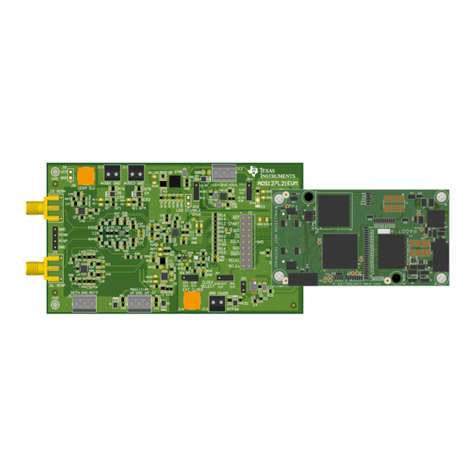
Texas Instruments
Texas Instruments ADS127L21EVM-PDK user guide
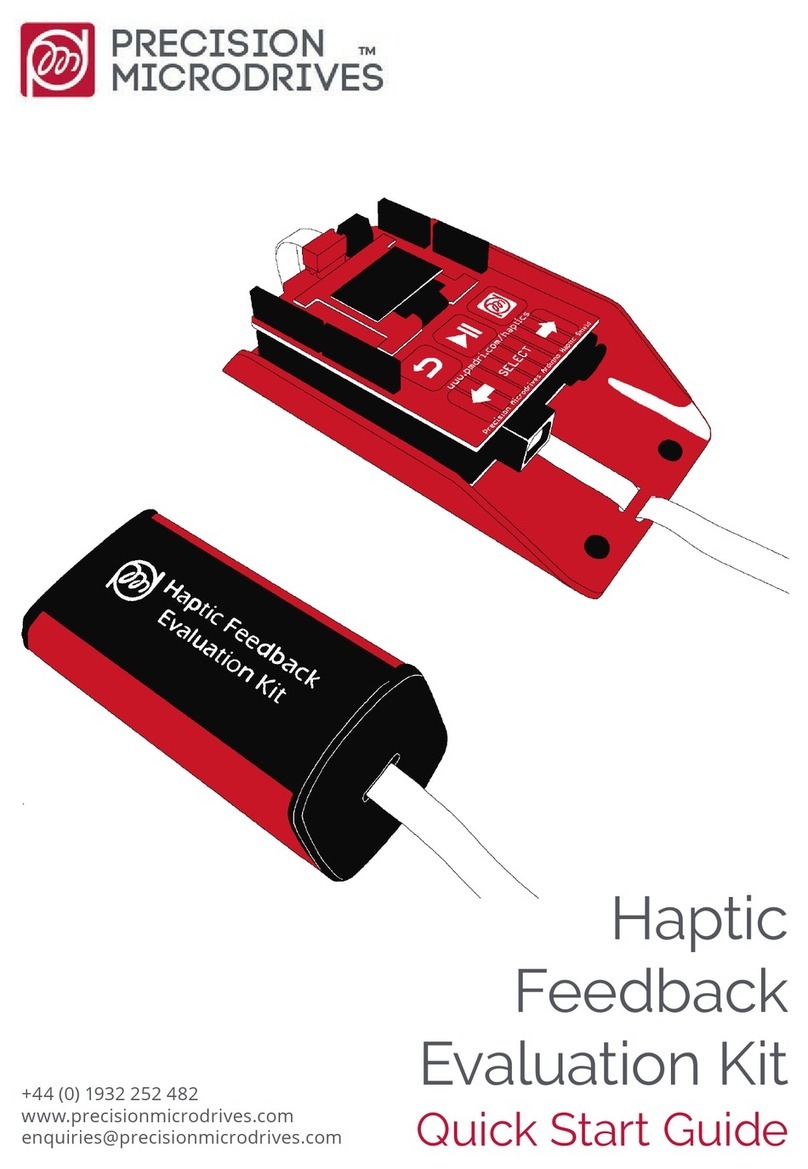
Precision Microdrives
Precision Microdrives Haptic Feedback Evaluation Kit quick start guide
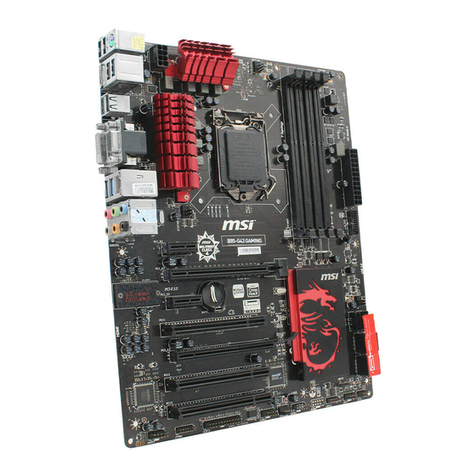
MSI
MSI Z87-G43 Series user manual
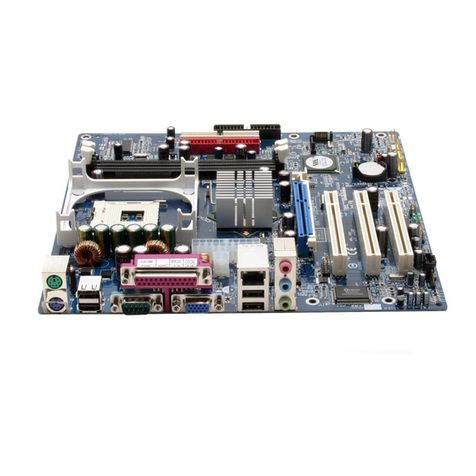
Albatron
Albatron PM800 Series user manual

MSI
MSI Z87-G41 PC Mate Preface
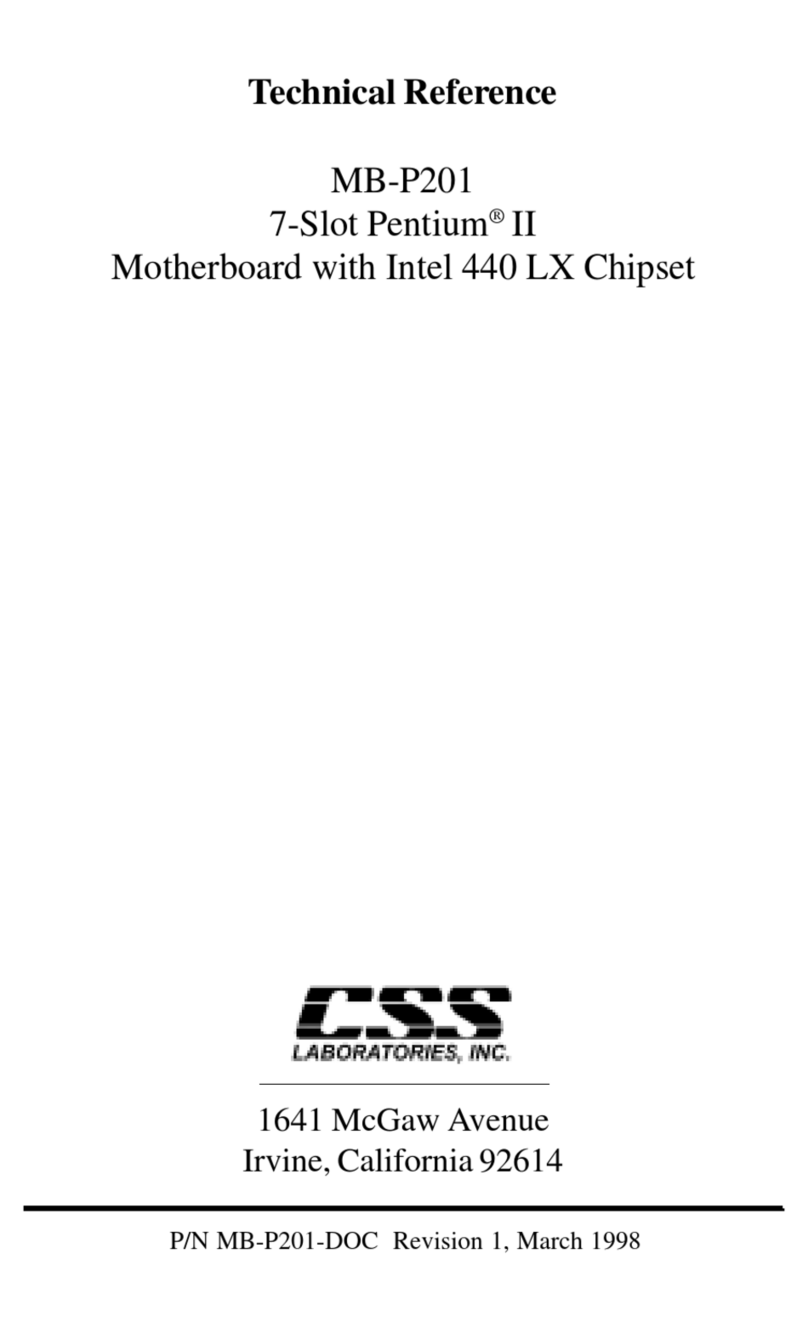
CSS Laboratories
CSS Laboratories MB-P201 Technical reference
